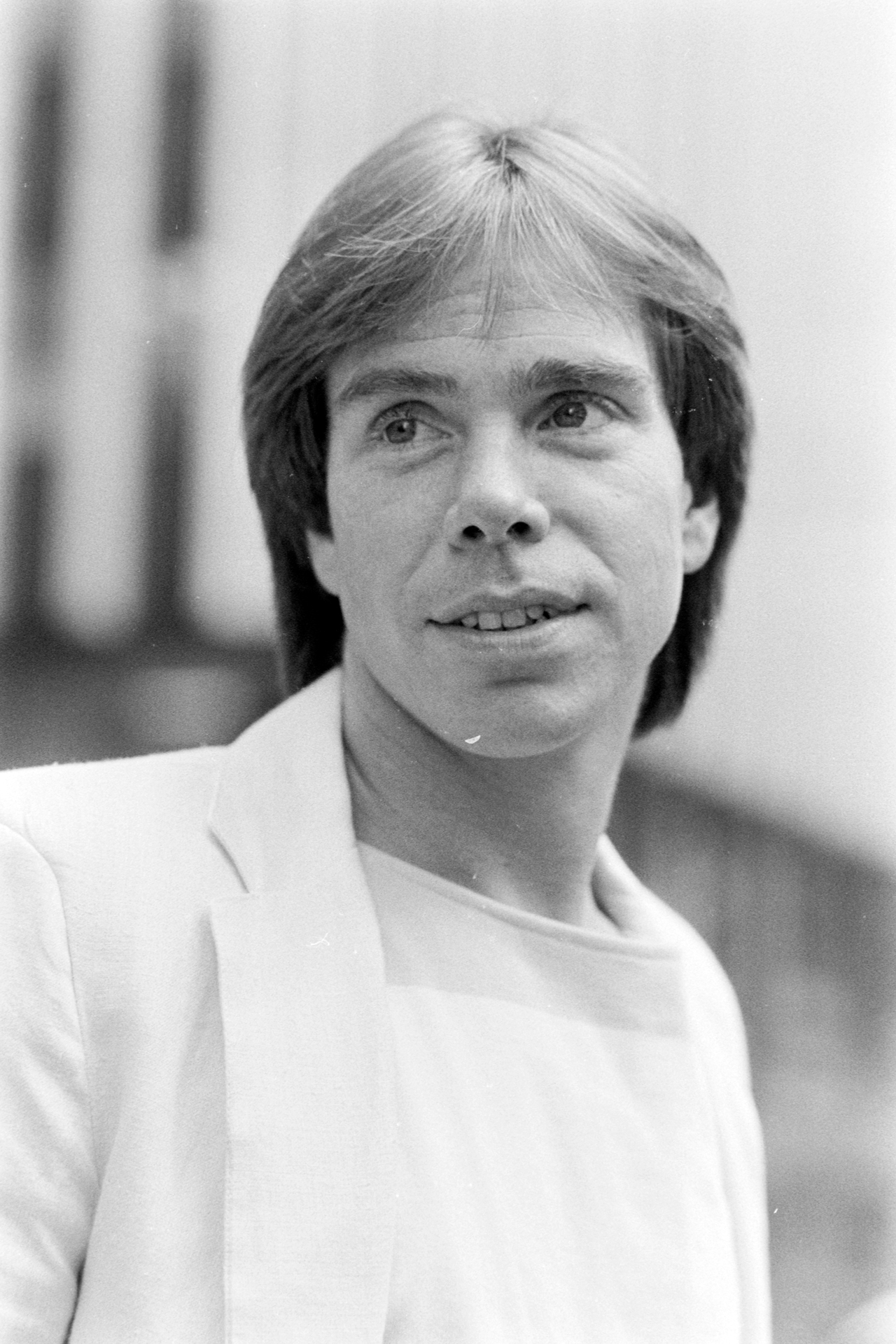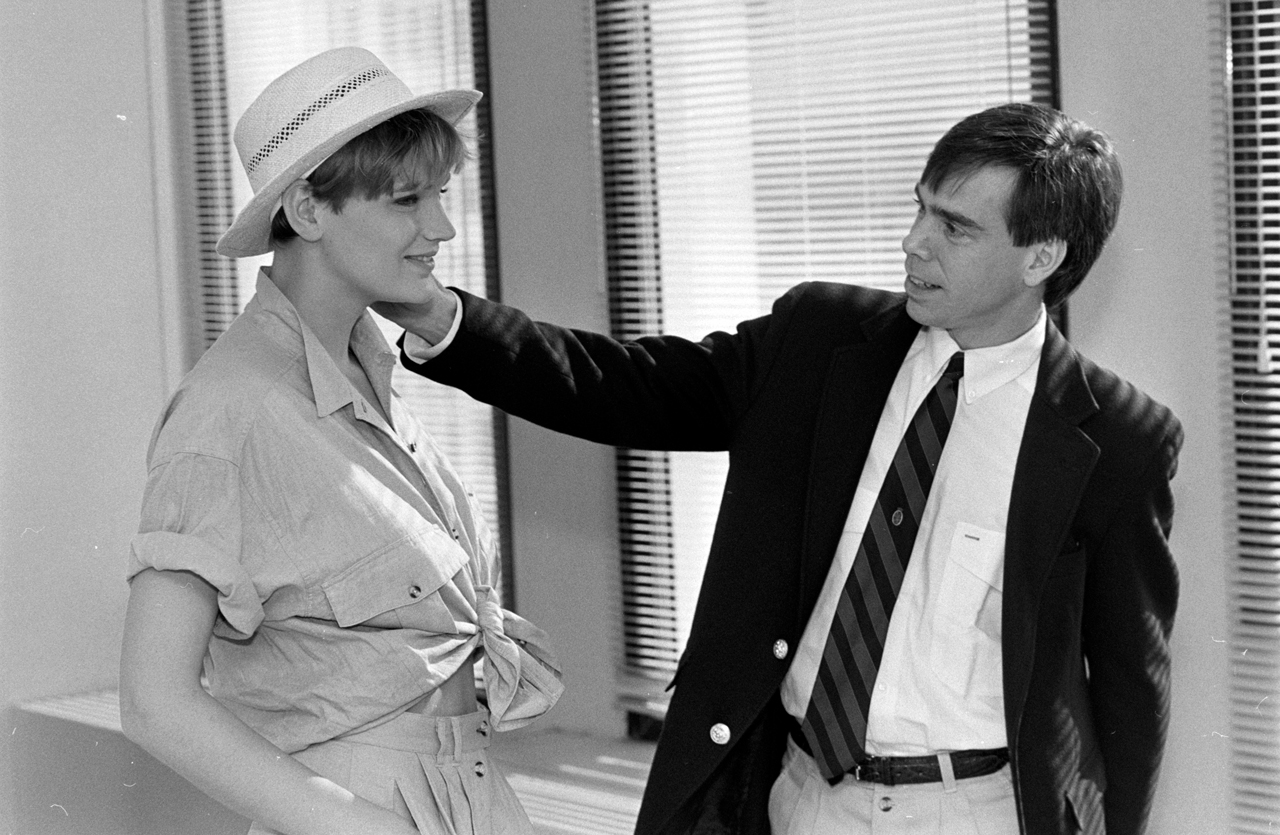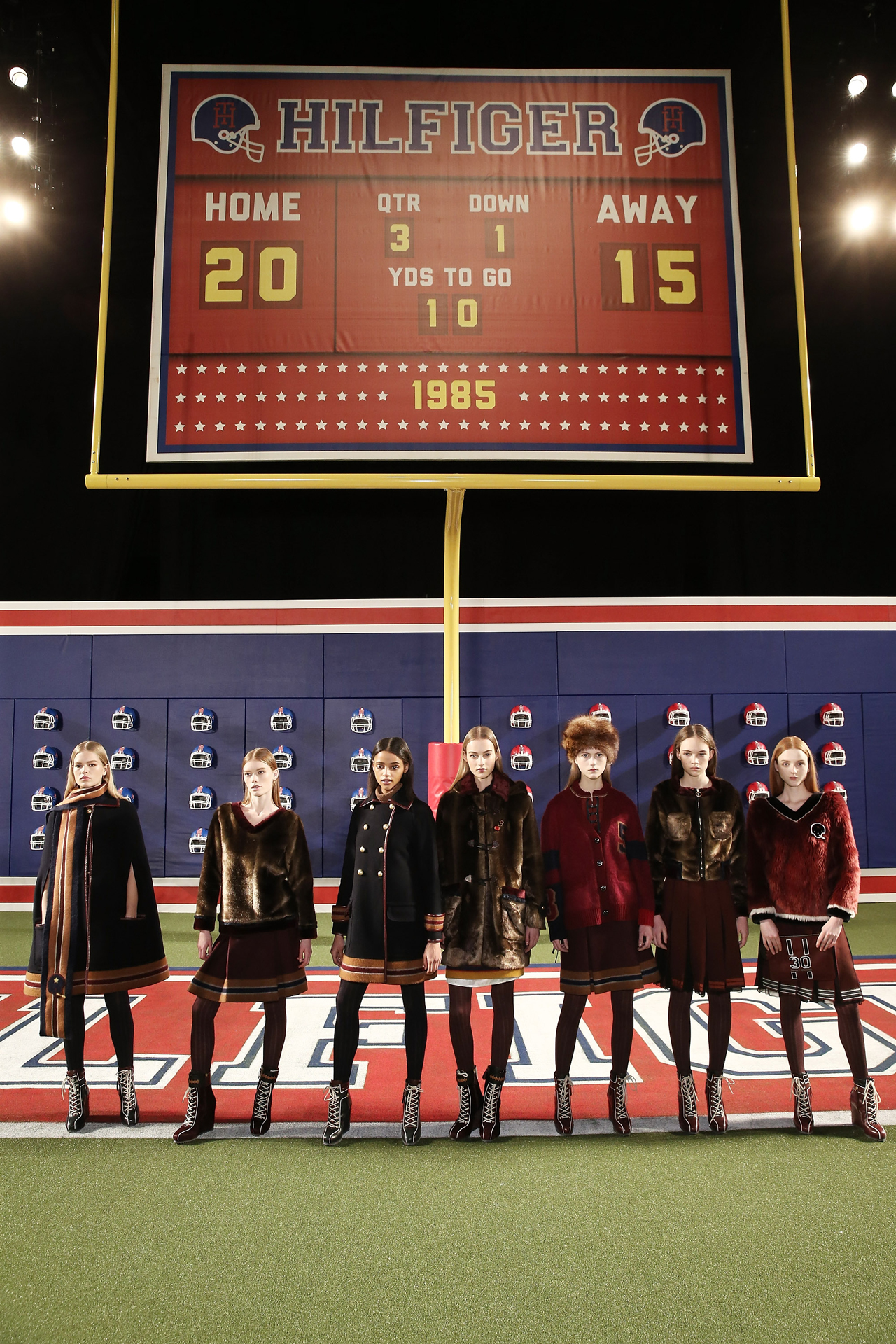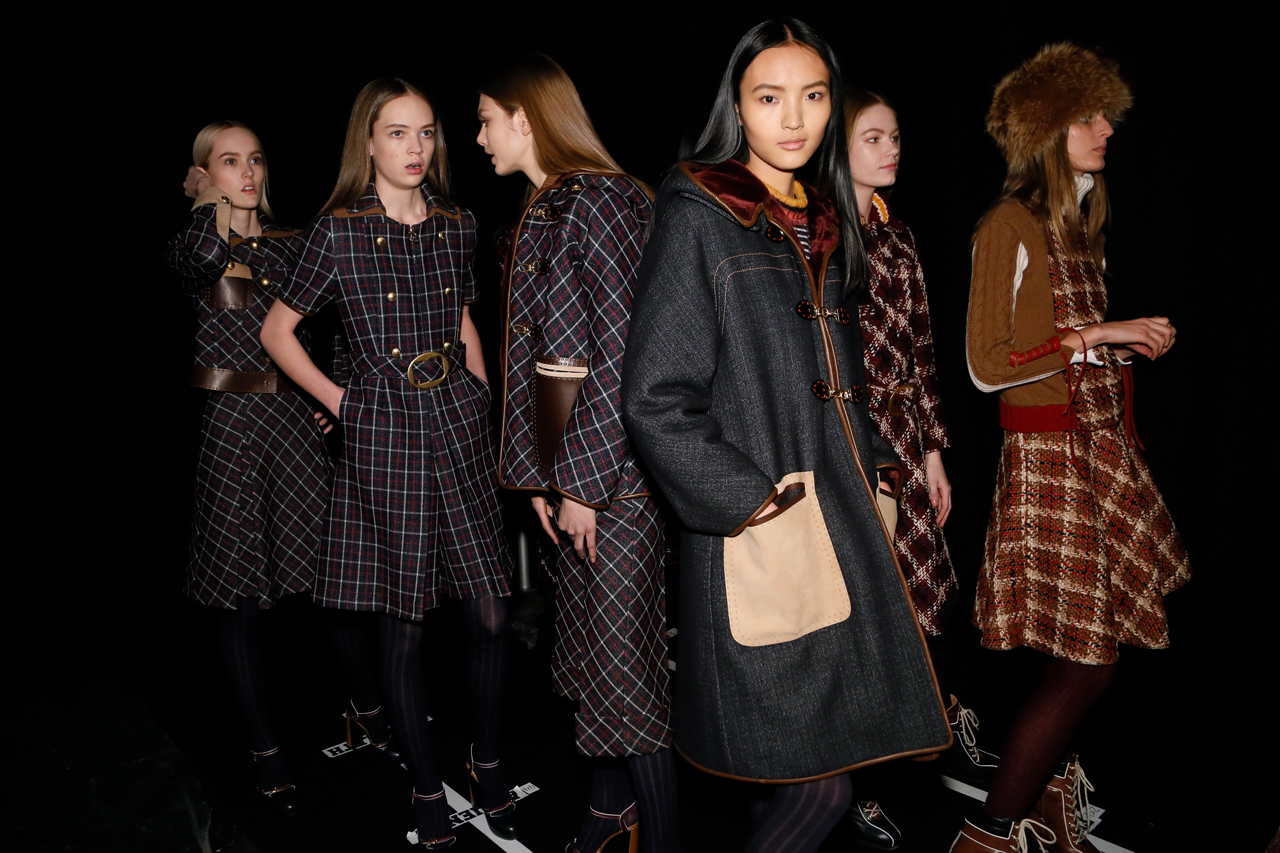
On Madison Avenue, a flag blows prominently in the wind, waving shades of red, white and blue. It could easily be mistaken for the country’s flag, but upon closer inspection, it’s the Tommy Hilfiger logo, and it marks the fashion behemoth’s headquarters.
As a first-timer in the concrete jungle, there’s a surreal quality to the city’s physicality. It is a place that is heavily mythologised and of epic proportions. Not just in its population, towering buildings or expansive boroughs but in its vitality and drive, where it’s not just the skyscrapers or scaffolding that dwarf you but the palpable sense that you’re only as big as your ambition—as the saying goes: if you can make it here, you can make it anywhere.
On a brisk winter’s day, I share a sofa with the man who not only made it—a few times over, even—but made it his own. Mr. Hilfiger’s name is emblazoned on the building, but he greets me like we’re having tea at his home and far from strangers.
We talk about his Fall/Winter 2024 collection, which will debut at Grand Central Station’s Oyster Bar that evening. The world has become accustomed to the brand’s travelling juggernaut shows that have set up tents in Paris and London, but this season sees a return to New York.
“It is our home,” Hilfiger explains of the decision, his voice deep and full of reverence.
“I feel that we’ve shaped fashion in New York for almost 40 years. And though we’ve had a lot of influence in other parts of the world, this, really, is where it all started. And we owe our very strong DNA to that.”
With an essential palette and an effortless preppy aesthetic as his North Star over the years, Hilfiger has hewn an empire out of a dream. Few brands in the casualwear space are as recognisable in both fashion and pop culture, and even fewer are as commercially successful.
But perhaps what’s kept him at the forefront of the industry is his sharp instincts for change—and when exactly to do it. Just like the city that inspired him, Hilfiger never stays static. As he gears up to celebrate four decades in business, the designer continues to evolve core codes.
“It’s kept us on track,” he appreciates. “But it always has to be fresh, reflective of the times.”

For those unfamiliar with the brand’s origins, Tommy Hilfiger first set up shop with a bricks-and-mortar in his birthplace of Elmira, New York. In 1971, Peoples’ Place, as it was called, began with just $150 and a small-town demand for bell-bottom jeans.
“There was a lot going on in the ’80s when I started out,” he recalls. “Music led the charge, and you had the punk rock scene with CBGB and Downtown with The Ramones and groups like that. And you also had Debbie Harry and Blondie playing Uptown. Then you had groups coming in from England like Led Zeppelin playing Madison Square Garden. But amongst it all, you had an emerging foreign vibe of what they called the New Wave.
“New Wave music brought on a fashion moment as well, where people were wearing jackets with giant shoulders. It was really a turning point for fashion because it went from disco to something else entirely—and it’s made up a lot of what we consider ’80s fashion now.”

Immersed in bustling creative circles at the time, Hilfiger speaks of the change that was afoot in the city.
“People were suddenly cutting their hair in a different way and were wearing loosened-up wardrobes because, during the disco era, people were wearing very tight jeans and lycra—it was all changing,” he says. “But I didn’t love ’80s fashion. I loved designing for the ’70s, and I made it a point not to become entrapped in the trends of the decades.”
His steadfast vision to bring something else to the table is perhaps what saw him thrive where others didn’t.
“I was intrigued with the competition, but I knew that in order to establish myself, I had to be different. And I was always thinking about how I could be fresh enough that people would see that difference in my brand,” he explains. “I wanted to be an alternative, in a sense, not to fall into the mainstream of what everyone else was doing in fashion.”
He moved on from various ventures, eventually founding the Tommy Hilfiger brand in 1985. It was then that he found his beat in riffing off styles typically reserved for the upper echelon and reconfiguring them for the masses. In taking traditionally posh ‘Ivy League’ garb like rugby shirts, varsity jackets and premium knits and reworking and relaxing them for everyday wear, Hilfiger would catalyse a movement in fashion that the world is still riding today.
By the mid-’90s, the brand was a hit with the hip-hop scene, preppy kids and almost everyone in between, finding a market sweet spot that didn’t simply tease aspiration, but put it in the wearer’s hands.

One of the reasons Hilfiger still garners the attention that he does, more so than many high fashion brands, is because of this track record of keeping his ear to the ground. Even now, where some venerable designers roll their eyes at the new guard and TikTok, Hilfiger has always been able to glean the bigger picture. Consider his 2016 collaboration with model Gigi Hadid before she was one of the most followed people on Instagram. With a front row packed full of content creators, the show itself embraced a truth that few in fashion were willing to accept at the time, lifting the velvet rope to ‘outsiders’ who now hold a large stake in the industry. Then there was the 2019 partnership with Zendaya that saw the Disney star become a household name in fashion with a viral Harlem show. Not only does he have an eye for spotting talent before the rest of the world has caught on, but he’s never been hesitant to bet it all on his instincts.
It was 2017 that saw one of the business’ most substantial changes when it left the seasonal schedule and switched to a see-now-buy-now model that enabled consumers to shop collections instantly. With the pace of trend cycles going into overdrive, it was a decision that paid off, and brands like Burberry, Tom Ford and Rebecca Minkoff have followed suit.
But though it made sense commercially then, his return to New York has ushered in a new era.
“We’ve elevated our entire offering, so it felt important to show in advance because of the sheer time and effort that goes into these garments,” he tells me of his comeback. “It’s more of an artisan approach with a lot of handwork and fabrics that aren’t as simple to work with or readily available.”
With this next chapter, he once again endeavours to democratise clothing.
The Fall/Winter 2024 collection, titled ‘A New York Moment’, sees Hilfiger’s DNA mature. Where he once redefined classics for all, subverting traditionally elitist aesthetics and giving them enduring street cred, he now sets out to do the same for ‘quiet luxury’.
“We grew up in this casualisation of the world, and our clothes remain casual. But we’re becoming more elevated and more refined,” he elaborates.

Just like the melting pot of people who make up the fabric of New York, the many lives the Hilfiger brand has lived come through in the details. Even in harkening back to his origins, the decades have honed Hilfiger’s eye for good design, and the result is sophistication with ease. An amalgam of worlds distilled into a singular vision. Reminiscent of the city itself, there is an inspiring play of contradictions, where the old and new embrace each other.
While all the essentials are still in play—preppy cable knits, shirting, chinos and sports jackets—there is an undeniably fresh take on Americana apparel that turns stealth wealth on its head. Supple neutrals, luxurious knits, a deviation from classic streetwear and an absence of graphic prints and logos—all offered at the brand’s mid-level price point—tell us that Hilfiger is highly attuned to his customers’ evolving needs.
“Dressing up is back. People are moving away from streetwear into a more polished look,” he said before the show. “It’s in the air—I can feel it.”
Having moved to Palm Beach in Florida for a sea change some years ago, the designer still maintains New York City is his home, despite admitting its shift. “There’s been a lot of change. Homelessness and crime are up, but people will stand by it through thick and thin,” he emphasised. “There’s still so much energy in the city. And never a dull moment.”
It’s easy to get lost in Mr. Hilfiger’s candour. Every nugget of information, every anecdote he so casually drops, speaks of a remarkable life. He’s been at the forefront of fashion’s upheaval, bearing witness to some of the most culturally significant changes in the modern world, and here he is, sitting across from me, apologising that he can’t stay long. There is the knowledge that these tidbits are just the tip of the iceberg, but our time together is up before I can really process it all—I suppose this is the New York minute they speak of.
Staring up at the colossal building once again, it’s no wonder this is where one would choose to plant their flag. Sure, it’s where the world meets, but on a personal level, it’s the place that has inspired him, and has been inspired by him, to dream big and do it on his own terms.

Of course, I got lost on my way back to the hotel—very, very lost. But instead of shadowing Hilfiger himself, I ended up shadowing his muse: New York. Or, more specifically, the people who make it up. For all the chaos, there’s a rhythm to its streets that began to sink in. Maybe it’s the pragmatic grid format or an unspoken agreement between inhabitants to stay out of each others’ way, but it’s like a current that lifts you up and carries you with it.
Arguably, the most captivating thing about Tommy Hilfiger, both as a man and as a brand, is his persistence in continuing to innovate. At his level of success, many would have kicked back in their hammocks, watching their empire thrive on its own, but the born-and-bred New Yorker keeps going. Not just letting the current move under his feet but actively steering it. It’s what endears his customers, old and new, to him and makes him such a formidable force.
I don’t know the city like Mr. Hilfiger, and can’t speak to its changes. Statistically, crime rates have indeed gone up, unhoused populations have hit all-time highs, and unemployment rates are still recovering from the pandemic. And yet, people will always dream of, and dream in, this city.
Perhaps the living embodiment of the elusive ‘American dream’, Hilfiger has always taken the old red, white, and blue, and season after season, illuminated its infinite possibilities. And looking around, it feels like he and the city evolved together once more. “New York goes through cycles all the time,” as Hilfiger noted. “It’s resilient.”
For a place that doesn’t sleep, it sure has a way of regenerating itself. Just like the many people who plant their flag there.
This story first originally appeared on GRAZIA International
